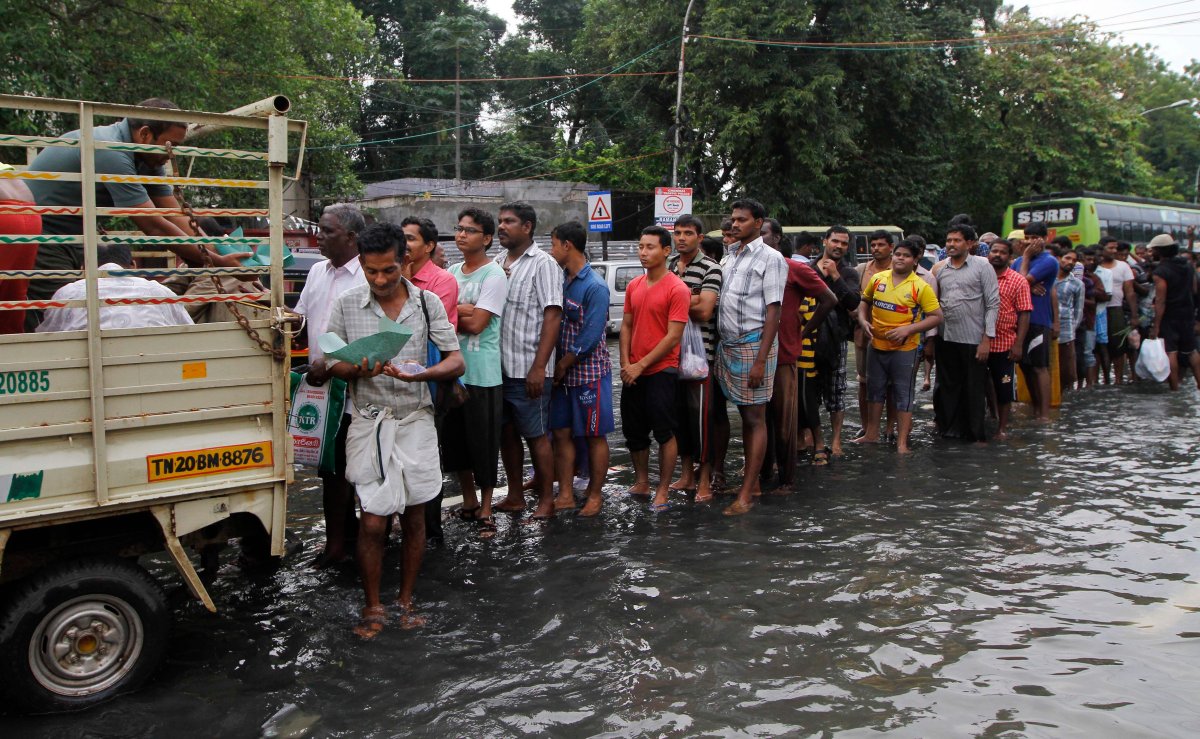NEW DELHI – Severe floods that have hit the southern Indian state of Tamil Nadu killed 18 hospital patients this week after rainwaters knocked out generators and switched off ventilators, officials said Saturday.

State authorities were investigating complaints of negligence by officials at MIOT International hospital in the state capital of Chennai, which is reeling from massive floods.
The 18 patients were in the intensive care unit when a power outage affected ventilators in the hospital, leading to their deaths over the past two to three days, said state Health Secretary J. Radhakrishnan.
READ MORE: Flood waters inundate homes and buildings in southern India
He said that floodwaters entered the room with the generators, cutting off power to the building and switching off the ventilators.
More than 280 people have died due to the floods in Chennai, a city of 9.6 million, and nearby districts, including several who were killed due to electric shocks from power distribution boxes that had been submerged by floodwaters. Authorities have turned off power supplies in some areas to prevent accidental deaths.
Army soldiers using boats have rescued thousands of residents marooned in high-rise buildings and launched massive relief operations to provide food and medicine
Although floodwaters have begun to recede, vast swaths of Chennai and neighbouring districts were still under 2 1/2 to 3 metres of water, with tens of thousands of people in state-run relief camps.
As officials struggled to supply drinking water and food packets, people were complaining that relief had not yet reached several neighbourhoods, four days after they were marooned or stranded on rooftops. With no electricity for more than four days, they had no way to charge their cellphones, they said.
“We feel quite helpless,” said Malti Soman, standing in knee-deep water in Mambalam, a residential area in central Chennai. “The landline phones are not working. And my cellphone is dead because there is no electricity to charge it.”
READ MORE: India’s Tamil Nadu grapples with worst floods in a century
Radhakrishnan, the health secretary, said Saturday that while the immediate rescue operations were tapering off, the main focus of the administration in the coming days will be to prevent the spread of communicable diseases.
In many areas, sewage drains have overflowed due to the rising floodwaters, posing a health hazard for residents who have had to wade through the water, Radhakrishnan said.
“This is a concern,” he said. “We are working with the local water and sewage agencies to disinfect the worst-hit areas.”
Sanitation workers have begun spraying insecticide in many places to prevent the spread of vector-borne diseases such as malaria and dengue due to the stagnant water collected in large parts of the city.
Chennai’s airport was closed for a fourth day Saturday, although some flights operated from a nearby air force base.
Railway services resumed partially, with a few trains running from Chennai’s main train station.
India’s main monsoon season runs from June through September, but for Chennai and the rest of the southeastern coast, the heaviest rainfall is from October to December, also called the retreating monsoon.
This year’s deluge — which experts linked to the El Nino weather pattern, when the waters of the Pacific Ocean get warmer than usual — caught Chennai completely unprepared.



Comments